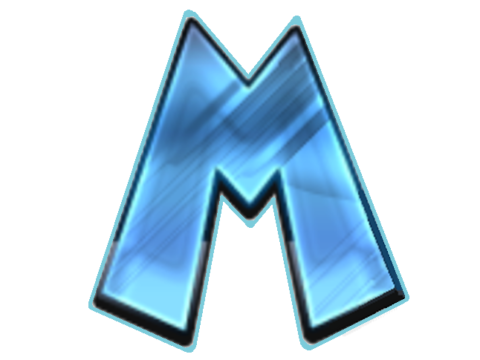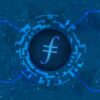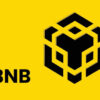
Solana has quickly risen to prominence as one of the fastest and most scalable blockchain platforms in the cryptocurrency space. Known for its high throughput, low transaction fees, and innovative Proof of History (PoH) consensus mechanism, Solana has become a preferred platform for decentralized applications (dApps), decentralized finance (DeFi) projects, and non-fungible tokens (NFTs). However, as the network grows and evolves, it faces both exciting opportunities and significant challenges. In this article, we’ll explore the future of Solana, upcoming developments, and the obstacles it must overcome to maintain its rapid growth.
Why Solana Stands Out in the Blockchain Space
Before delving into the future, it’s essential to understand what makes Solana unique. The blockchain’s architecture enables it to process up to 65,000 transactions per second (TPS), significantly higher than Ethereum and Bitcoin. Its combination of Proof of History (PoH) and Proof of Stake (PoS) consensus mechanisms ensures speed without sacrificing decentralization or security. Solana also offers incredibly low transaction fees, making it attractive to developers and users looking to avoid Ethereum’s high gas fees.
These features have made Solana a hub for DeFi platforms, NFT marketplaces, and gaming dApps, driving significant adoption. But what’s next for this high-performance blockchain?
Upcoming Developments in Solana
Several upcoming developments could push Solana to new heights, further solidifying its place in the blockchain ecosystem. Below are some key advancements that are expected to shape the future of Solana.
1. Improved Network Scalability
Solana is already known for its scalability, but the team is continually working on upgrades to further enhance the network’s performance. As more users and projects join the platform, ensuring that the network can handle increased demand is crucial. Future developments in transaction parallelization and better node optimizations will allow Solana to maintain its high throughput even as adoption grows.
2. Expansion of the Solana Ecosystem
The Solana ecosystem is expanding rapidly, with new dApps, DeFi platforms, and NFT projects being built on the network. Projects like Raydium, Serum, and Solend are already making waves in the DeFi space, while NFT platforms such as SolSea and Metaplex have garnered attention in the art and collectibles markets. As more developers choose Solana for its speed and cost efficiency, the ecosystem will continue to grow, offering more opportunities for users and investors.
3. Cross-Chain Interoperability
One of the biggest trends in blockchain technology is interoperability—the ability for different blockchains to communicate and exchange value. Solana is working on improving its cross-chain compatibility with other networks, including Ethereum and Binance Smart Chain (BSC), through the use of bridges. This will enhance liquidity and allow users to move assets seamlessly between different ecosystems, making Solana an even more attractive platform for dApp developers.
4. Enhanced Developer Tools
A significant factor in Solana’s future success will be the availability of comprehensive and user-friendly developer tools. The Solana Foundation is actively working on improving the development environment by providing better documentation, debugging tools, and testing frameworks. With easier onboarding for developers, Solana is likely to see a surge in the number of dApps and DeFi projects being built on its blockchain.
5. Layer-2 Solutions
Layer-2 solutions, which operate on top of the base blockchain, aim to improve transaction speeds and reduce costs even further. Solana is exploring various Layer-2 technologies that could provide additional scalability without compromising the network’s security. These solutions will be crucial as the platform looks to support millions of users and transactions daily.
6. Solana Pay Integration
Solana Pay is another exciting development that could revolutionize how businesses and consumers interact with the blockchain. By offering a fast, secure, and low-cost payment system, Solana Pay could enable widespread adoption of cryptocurrency payments in the retail and e-commerce sectors. This payment infrastructure has the potential to compete with traditional payment processors like Visa and PayPal.
7. Increased Institutional Adoption
Institutional interest in Solana is growing, with hedge funds, venture capital firms, and fintech companies investing in the blockchain. As institutional adoption increases, we can expect more large-scale financial products and services to be built on Solana, driving further growth and credibility for the network. Recent partnerships and collaborations with FTX, Circle, and other key players highlight Solana’s potential as a mainstream blockchain.
Challenges Facing Solana
While Solana has enormous potential, it also faces several challenges that could impact its future growth. Let’s take a closer look at some of these obstacles.
1. Network Downtime
One of the most significant challenges Solana has faced is network downtime. In 2021 and 2022, the network experienced several outages due to bugs and excessive load, which temporarily brought transactions to a halt. Although the development team has worked hard to address these issues, maintaining stability and preventing future outages will be critical for Solana’s long-term success, especially as it aims to scale.
2. Increasing Competition
Solana isn’t the only high-performance blockchain vying for market share. Competitors such as Avalanche (AVAX), Polkadot (DOT), and Binance Smart Chain (BSC) are also focusing on scalability, low fees, and fast transaction speeds. As the DeFi and NFT spaces continue to evolve, Solana will need to innovate continually to differentiate itself from its rivals.
3. Decentralization Concerns
Despite being a Proof of Stake network, some critics argue that Solana’s level of decentralization is not as robust as it should be. A large portion of Solana’s validation is concentrated in a relatively small number of validators, which could potentially lead to centralization risks. Ensuring a more distributed and decentralized network is crucial for maintaining trust within the community and avoiding potential vulnerabilities.
4. Regulatory Scrutiny
As with all major blockchain networks, Solana may face increasing scrutiny from regulators as cryptocurrency adoption grows globally. Governments are becoming more concerned about the potential for fraud, money laundering, and consumer protection issues within the DeFi space. Navigating these regulatory challenges without stifling innovation will be a delicate balancing act for Solana.
5. Sustaining Developer and Community Interest
For any blockchain network, a strong developer community is key to continued growth and innovation. While Solana has attracted a lot of attention from developers, it will need to continue fostering a supportive and engaging environment to sustain long-term developer interest. This includes providing resources, grants, and incentives for developers to build on the platform.
Conclusion
The future of Solana is bright, with numerous exciting developments on the horizon. From improved scalability and cross-chain interoperability to the expansion of its DeFi and NFT ecosystems, Solana has positioned itself as a leader in the blockchain space. However, the network must overcome significant challenges, including network reliability, increasing competition, and regulatory scrutiny.
As Solana continues to innovate and address these issues, its potential to transform industries ranging from finance to gaming is immense. By staying focused on its core strengths—speed, low fees, and scalability—Solana is poised to play a major role in shaping the future of blockchain technology. Whether you’re an investor, developer, or enthusiast, keeping an eye on Solana’s progress will be key to understanding the next wave of blockchain innovation.









